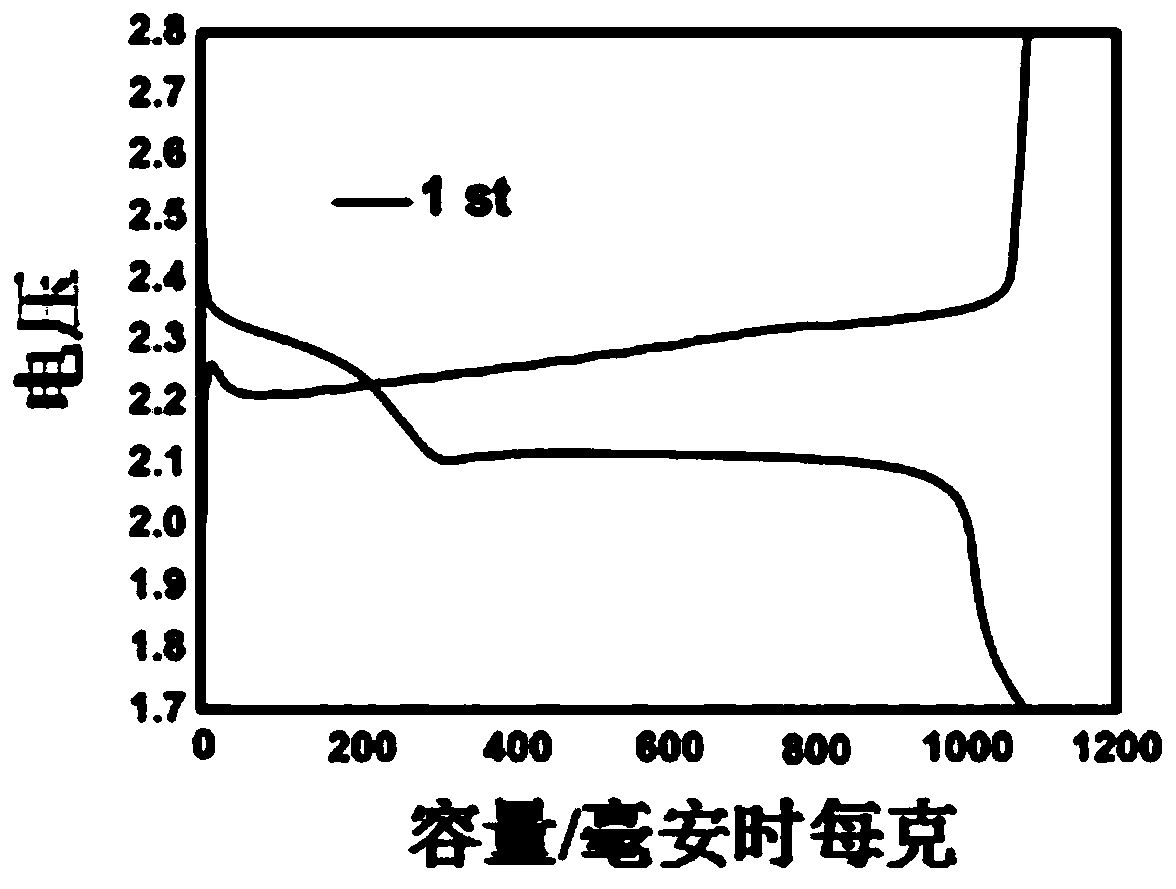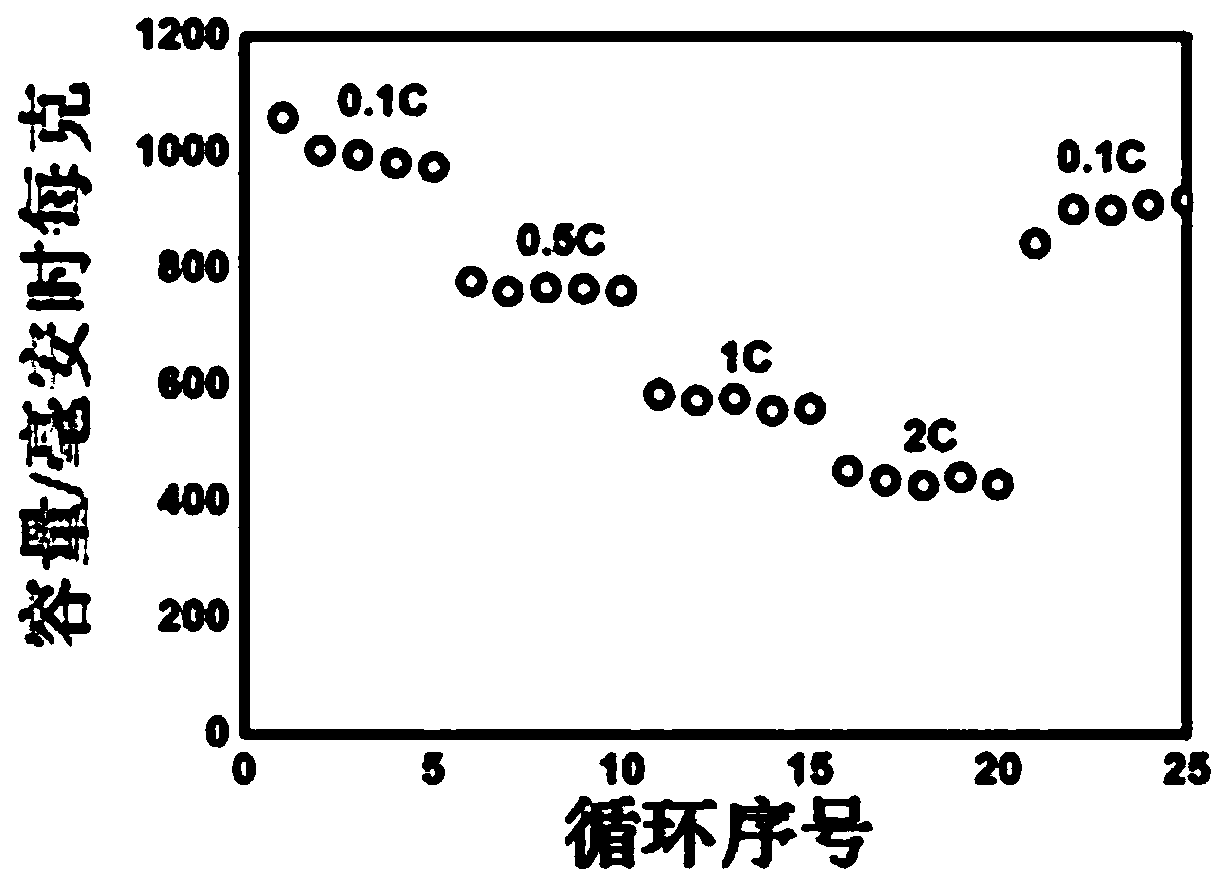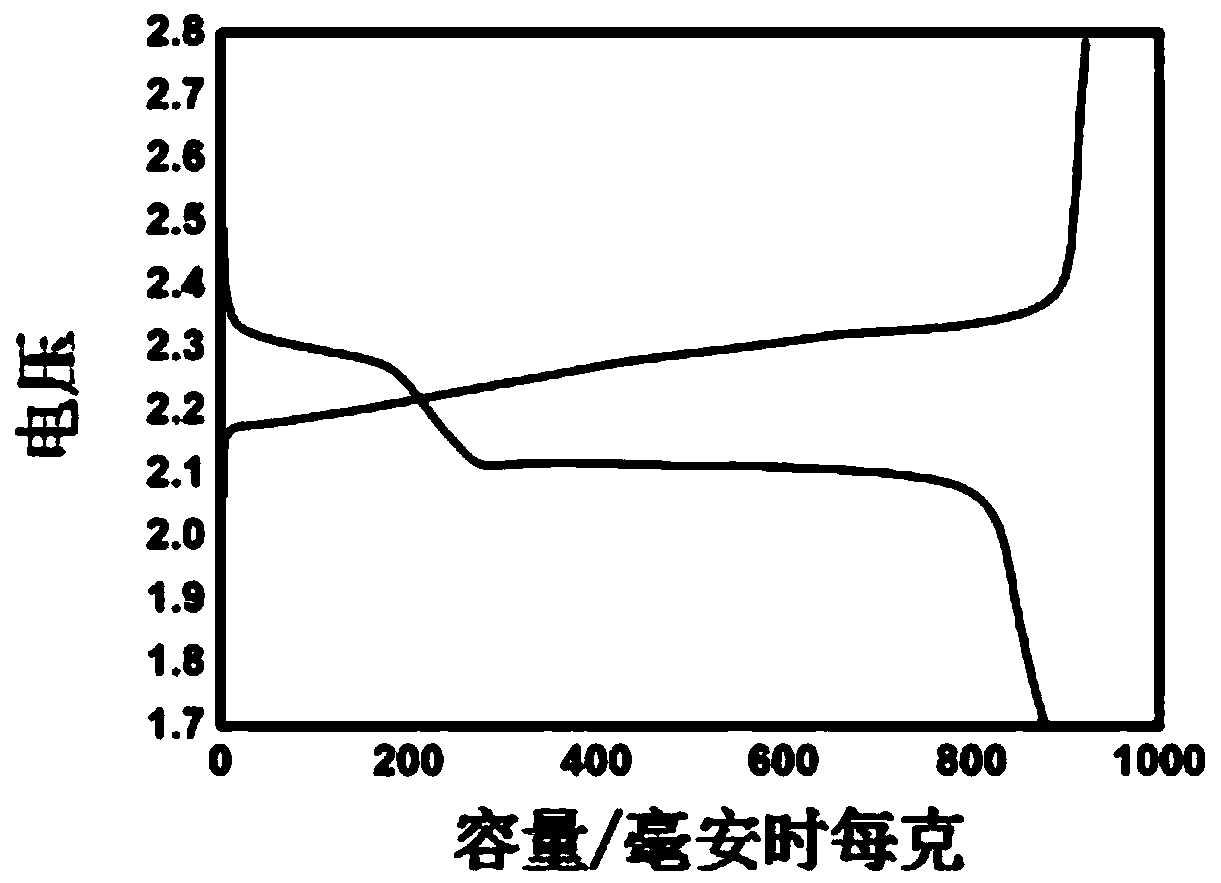Preparation method of composite material for lithium-sulfur battery, and application of composite material
A composite material, lithium-sulfur battery technology, applied in the direction of lithium battery, electrolyte battery manufacturing, battery electrodes, etc., can solve the problems of lithium-sulfur battery discharge specific capacity decrease, battery cycle stability deterioration, restricting lithium-sulfur battery performance and other problems, Achieve fast and continuous long-distance electron transport, inhibit shuttle, and achieve the effect of long-distance electron transport
- Summary
- Abstract
- Description
- Claims
- Application Information
AI Technical Summary
Problems solved by technology
Method used
Image
Examples
Embodiment 1
[0025] The first step: Fe 3 o 4 Preparation of / CC composites:
[0026] The mass percent was 20% Fe(NO 3 ) 3 9H 2 O and 2.5% PVP were dissolved in 20mL of DMF at a mass ratio of 1:1, and then a mixed solution was prepared by stirring vigorously at a temperature of 70°C (overall superficial flow velocity above 0.2m / s), and then at 20 At ℃, the solution was deposited on the carbon cloth substrate by the dip coating method, and the excess solution was removed. Finally, the modified carbon cloth was pyrolyzed in air at 600° C. for 2 hours.
[0027] The second step: the preparation of FeP / CC composite material:
[0028] The Fe prepared in the first step 3 o 4 / CC and NaHPO 2 were placed in two porcelain boats, the molar ratio of Fe and P was 1:20, and then the porcelain boats were placed in a tube furnace filled with NaHPO 2 The porcelain boat is placed near the end where the gas is introduced. Subsequently, the samples were heated at 300 °C for 2 h under a static argon ...
Embodiment 2
[0033] The first step: Fe 3 o 4 Preparation of / CC composites:
[0034] The mass percent was 25% Fe(NO 3 ) 3 9H 2 O and 5% PVP were dissolved in 20 mL of DMF at a mass ratio of 1:2, and then the mixed solution was prepared by stirring vigorously at a temperature of 80 °C, and then at 20 °C, the carbon cloth lining was coated by dip coating method. The solution was deposited on the bottom, and excess solution was removed. Finally, the modified carbon cloth was pyrolyzed in air at 800°C for 4 hours.
[0035] The second step: the preparation of FeP / CC composite material:
[0036] The Fe prepared in the first step 3 o 4 / CC and NaHPO 2 were placed in two porcelain boats, the molar ratio of Fe and P was 1:20, and then the porcelain boats were placed in a tube furnace filled with NaHPO 2 The porcelain boat is placed near the end where the gas is introduced. Subsequently, the samples were heated at 400 °C for 3 h under a static argon atmosphere, and then naturally cooled t...
PUM
 Login to View More
Login to View More Abstract
Description
Claims
Application Information
 Login to View More
Login to View More - R&D
- Intellectual Property
- Life Sciences
- Materials
- Tech Scout
- Unparalleled Data Quality
- Higher Quality Content
- 60% Fewer Hallucinations
Browse by: Latest US Patents, China's latest patents, Technical Efficacy Thesaurus, Application Domain, Technology Topic, Popular Technical Reports.
© 2025 PatSnap. All rights reserved.Legal|Privacy policy|Modern Slavery Act Transparency Statement|Sitemap|About US| Contact US: help@patsnap.com



